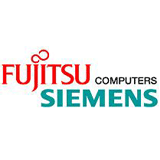 |  | Please review our faq page before writing to forum or contacting technical support. Your question might be there and will get fast and accurate respond. Choose a product from the list bellow: 

StarPort Storage Controller Table of Contents- Understanding difference between StarWind and StarPort.
- Does iSCSI support Jumbo frames?
- Why Windows 2000/XP does not work with remote disks >2TB?
- How to change maximum buffer size for storage requests?
- How to share hard drives.
- Configuration error #1434
- Local vs remote mounting.
- Problems writing to a remote DVD burner connected with a wireless LAN
- What does "The semaphore timeout period has expired" error mean?
- Can I build a Microsoft Cluster with my Coraid AoE device and StarPort?
- Sharing AoE device to SMB clients.
- Problem adding AoE device

- Q. I have downloaded the most current versions from the site of StarPort/Wind. I am trying to get StarPort to recognize the local drives and the LAN (remote) drives. I did go into the conf file to add the drives, but get lost on the IP address. I have gone in and checked the LAN address and the physical ip on both computers, but it doesnt pick up the remote system to locate the drives on it. I have gotten it to recognize 1 of the local drives so far and still trying to get it to recognize the second local also. Any help on these 2 issues is greatly appreciated.
A. StarPort is a client part. StarWind is a server part. StarPort is able to connect to devices shared by StarWind on the same or remote computer. So all what you have to do is:
1. Install StarWind on a computer where devices (hard drives) are located. Let it be remote computer.
2. Share physical devices or create virtual ones via editing StarWind.conf file. See examples in "StarWind configuration (English).pdf", 3.4.x. Do not forget to restart StarWind service.
3. Install StarPort on a client computer. From this computer you will connect to devices on the remote computer.
4. Run StarPort, choose Add device wizard, enter IP address or name of the remote computer - you will see all devices shared by StarWind. Choose device you want top connect, StarPort will map it as a local device.
Table of Contents - Q. Does your software support Jumbo frames (9000 bytes per frame)? I changed the maximum frame size in my NIC to 9000 bytes and now it stopped working.
A. Our iSCSI software (StarWind and StarPort) knows nothing about the underlying Ethernet frame size. It just uses Windows sockets interface. So if large frames are the reason of the error you need to check whether all the part in the network path do support the mode. MSome chip 1GbE switches does not support non-standard frame sizes at all. Table of Contents - Q. Why Windows 2000/XP does not work with remote disks > 2TB? I mounted an AoE (or iSCSI) disk with StarPort but the Disk Manager shows it as unreadable and can not use it.
A. Windows 2000/XP does not support disks > 2TB by design. Only Windows 2003 SP1 and later versions include the feature.
For older Windows versions you need to divide your storage device into several logical disks < 2TB. After that the logical disks are accessible from Windows 2000/XP as well as from recent Windows versions. Table of Contents - Q. My iSCSI target device does not support requests bigger 60KB. Can I limit the maximum request size that StarPort can send to me?
A. Yes, you can set the StarPort driver to use different maximum request size. The settings can be changed at the registry key:
[HKLM\CurrentControlSet\Services\StarPort\Parameters]
Value 'MaxBufferSize' (DWORD)
By default StarPort uses MaxBufferSize=65536
To apply changes just restart your initiator machine.
Please keep in mind that changing of MaxBufferSize is global to all StarPort's devices. So setting MaxBufferSize too small can lead to performance degradation for other devices accessed with StarPort (like hard drives, CD/DVD burners, etc).Table of Contents - Q. I share a hard drive with SPTI module. When I write a file onto the share drive I can't see or access it from the local server's account. If I write a file from the server's logged-in account I can't see it from the remote client.
A. Configurations where remote iSCSI clients and local server processes access the same drive are not supposed to work correctly with read/write devices, because the file system's data is not synchronized between clients. If you use such a configuration, the file system will be corrupted in short time.
There are 2 ways how to use shared iSCSI disks: - Using of a distributed (SAN) file system. (MetaSAN iSCSI or DataPlow SFS are supported)
- Using of the MS Clustering Services.
NOTE: StarWind since v3.2.1 has SPTI access blocking local file system calls when a remote client connects (except the "Share RW" set).Table of Contents - Q. I get the following message from StarPort: "Configuration error #1434. Please contact Rocket Division Software for more details". Where can I find these details?
A. The error message #1434 means that StarPort detected license violation.
You may install your StarPort Professional license only to a single machine.
If you need to install StarPort to several machines, please purchase a separate StarPort license for each of them. Table of Contents - Q. Could it be that the DVD writer is locally mounted to the machine and there for not available for a mount from the remote PC ?
A. Yes, if the DVD writer is mounted locally it can not be used remotely. Table of Contents - Q. I have some troubles writing to my remote DVD burner connected with a wireless LAN. The iSCSI server is StarWind and the client is StarPort or MS iSCSI Initiator. It has been no problem writing the image into CD-R disks, it went just fine, but I can not do the same with DVD-R media.
A. The network throughput of your WLAN is enough for CD recording, but is not enough for DVD recording. Either try to set slower recording speed when recording DVDs or use different network hardware (at least 100 Mbps LAN). Table of Contents - Q. I got the server set and the client set, but when I try to connect to the iSCSI target, StarPort reports the following error: "the semaphore timeout period has expired".
Is this a client side problem or is it a server side trouble?
A. - Check whether the IP address (or machine name) in the StarPort's "Add device" dialog is correct.
- If there is a firewall running on the machine, check whether the TCP/IP port 3260 is enabled for outgoing connections.
- Check the server side firewall to enable the same TCP/IP port for incoming connections. Table of Contents - Q. Can I build a Microsoft Cluster with my Coraid SR-1520 device and your StarPort driver? I connected to the device and it's visible in the Disk Manager, but the MSCS can not use it.
A. The recent version of Starport does not support using of AoE devices in MS cluster. This is because of limitation of current version of the AoE protocol. We are planning to implement support of MSCS for AoE devices in one of the next StarPort versions. Table of Contents - Q. How can I share my AoE device to SMB clients? When I create a shared folder it works well, but after the server reboots the share becomes unavailable. Any suggestions?
A. You need to set the LanmanServer service dependent on StarPortService. So all share management will wait for the AoE devices are ready.
Use the Microsoft Service Control utility (Sc.exe) to create service dependencies.
This method is the preferred way to create service dependencies because the user does not have to manually modify the registry.
1) Open the Command Prompt.
2) Type and run the following command:
sc config lanmanserver depend= StarPortService
Its possible to set up service dependencies manually editing the Registry keys, but this way is not safe and can lead to serious problems that may require you to reinstall the operating system. So please use the previous method whenever its possible.
For Windows 2000 you have to edit the Registry by hands.
After the system reboots the service will wait for all the devices auto-mounted by StarPort driver are available. Table of Contents - Q. I get "driver error" in last screen of the wizard when trying to add AoE device.
A. The driver error raises when volume was mounted and was not released
properly. So current driver was finding "alien" configuration string and refusing to proceed.
Please, try to check "Edith the configuration string" or/and "Force set the configuration string" checkboxes while you are connecting the AoE device.
If the Edit the Configuration String option is selected you can specify the custom configuration string. By default StarPort uses the PC name as the configuration string. You should change the configuration string only if the AoE device could not be mounted successfully and you are sure that the specified configuration string is wrong;
Select the Force set the Configuration String option to overwrite the configuration string of the AoE device. In this case the device's configuration string is changed and the device is mounted then. Table of Contents
|  | |  |  |



